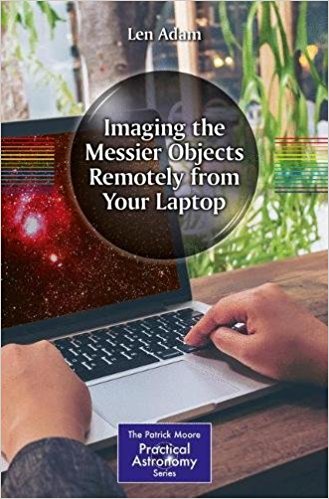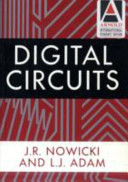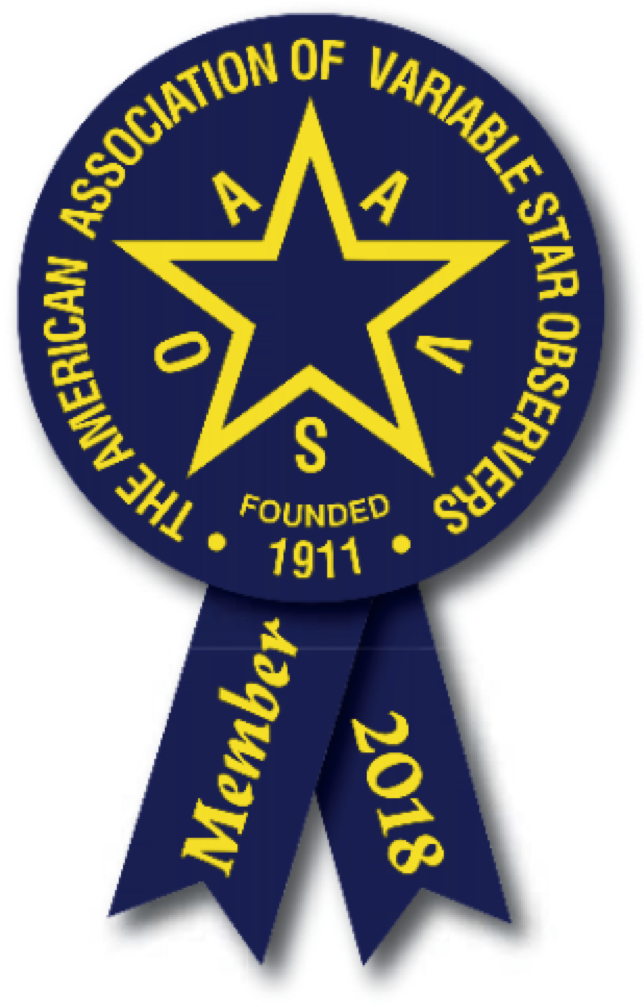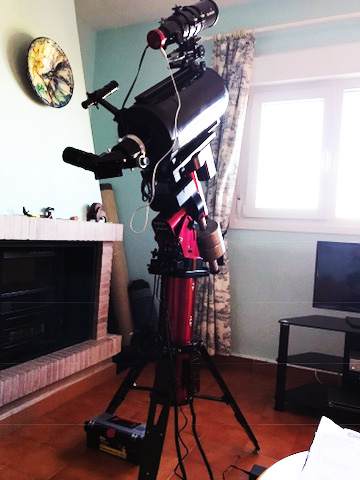ASASSN-14jg at magnitude 14.7
 Sunday, November 2, 2014 at 11:12AM
Sunday, November 2, 2014 at 11:12AM From my previous blog I calculated the approximate magnitude of the supernova at 14.7 V. I display the photometry here again with the comparison and check stars identified.
I intend to determine the magnitude of the supernova every day if possible using telescopes in Australia - as an exercise for me in learning about photometry and to determine its light curve. .
The above V image was taken with T31 a 0.5m telescope at Siding Spring. The telescope also has a B filter but does not have a set of Transformation Coefficients calculated for it to the best of my knowledge. However I have reserved time on T31 to take V images at 11pm Australian time today ( 1pm Spanish time - in about half an hour as I type this) when the SN is at about Air Mass 1.24 - just less than 60 degrees in altitude.(and for the next two days)
The telescope T17 is about 0.4m but does have a set of Transformation values so I have booked that for the same time as T31 to take B and V images of the object.
==========================================================================================
Last night the Moon was bright and seeing was poor so I did no imaging. I noticed that the telescopes Telescopes remained under cover
Turre is the nearest town to Cabrera where I am based up in the mountains.were available at Astrocamp - about 180 km away from me by road at Nerpio. They are a lot higher so perhaps seeing was better there than here. Nik Szymanek has a telescope there that he uses remotely(image). Astrocamp is linked to iTelescope.net and has three telescopes available for use. Astrocamp is at 1660m - much higher than my location of 400m and it has much darker skies - the development of Mojacar and Garrucha near me has brought a lot of light pollution in the last few years - back to thinking about that amateur space telescope again! The question is where can you get a compromise of not being totally isolated and dark - clear skies - it is getting more difficult every year. Remote telescopes seem more attractive. It is an
Telescopes above the poolexpensive option to have a telescope hosted in Siding Spring or New Mexico but probably a lot cheaper than moving house. There is a continuous support expense however which is expensive on a monthly basis!
Andrew Harrison has done it however - here is a good description of what he has achieved.
This morning the eastern sky was red - not a good sign according to sailors/shepherds! The sun was breaking through however and I used my ETX90 with a Mylar screen to see how the Sun was doing - some sunspots - none to equal the large sunspots of last week which are on the other side of the Sun now. My friend Andy Devey (the Solar Explorer) just across the valley from me here in Spain achieved some spectacular results. One of his spectacular images - a mosaic - is shown below.
 Copyright: Andy Devey.
Copyright: Andy Devey.
I see that the images from T17 at Siding Spring have now arrived in the US and are in my VPhot image list - I need to go and sort those out - another blog later! I believe that T17 was originally based in Spain and for some reason was shipped off to Australia - I need to check that out.
 [Your Name Here] | Comments Off |
[Your Name Here] | Comments Off | 







